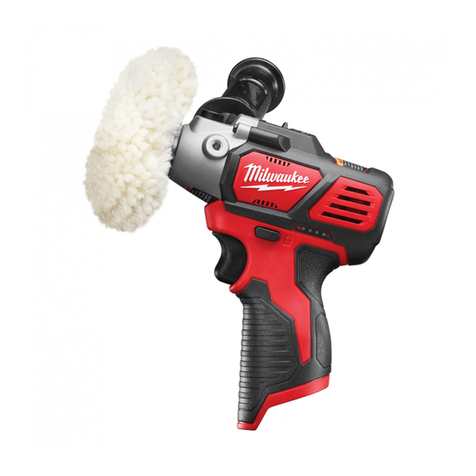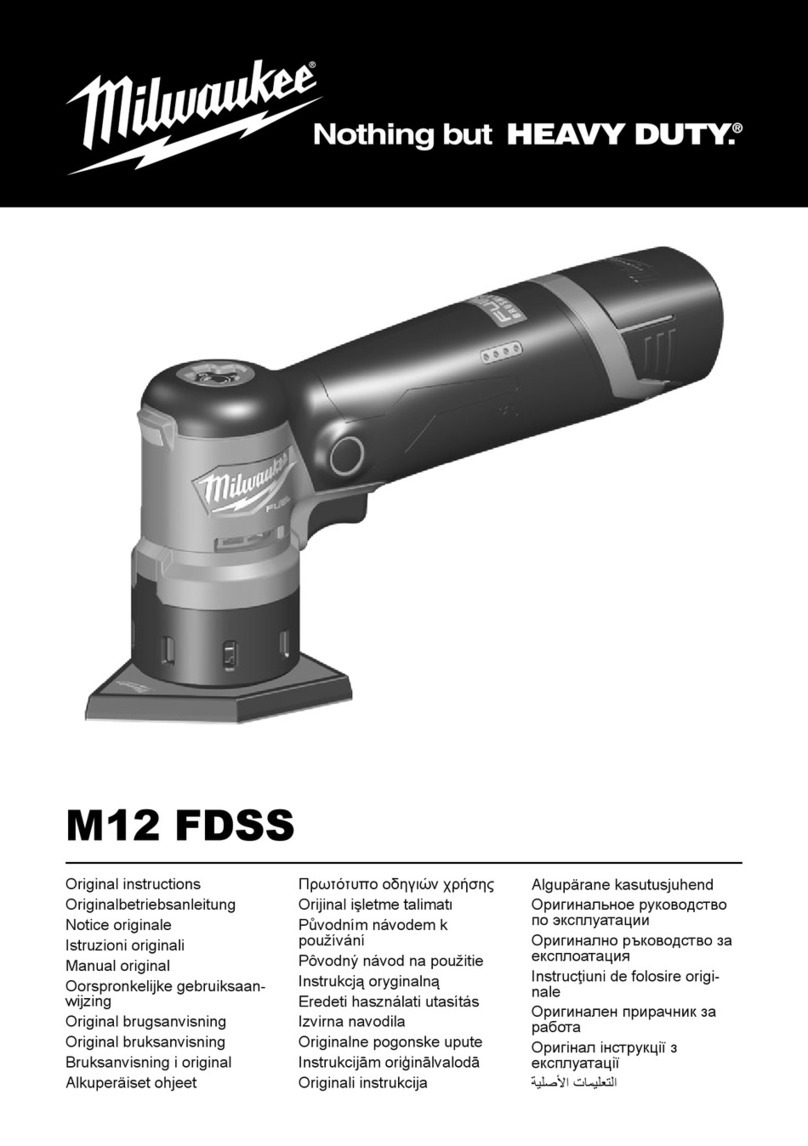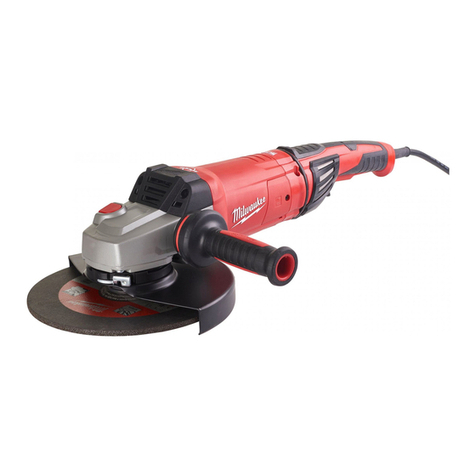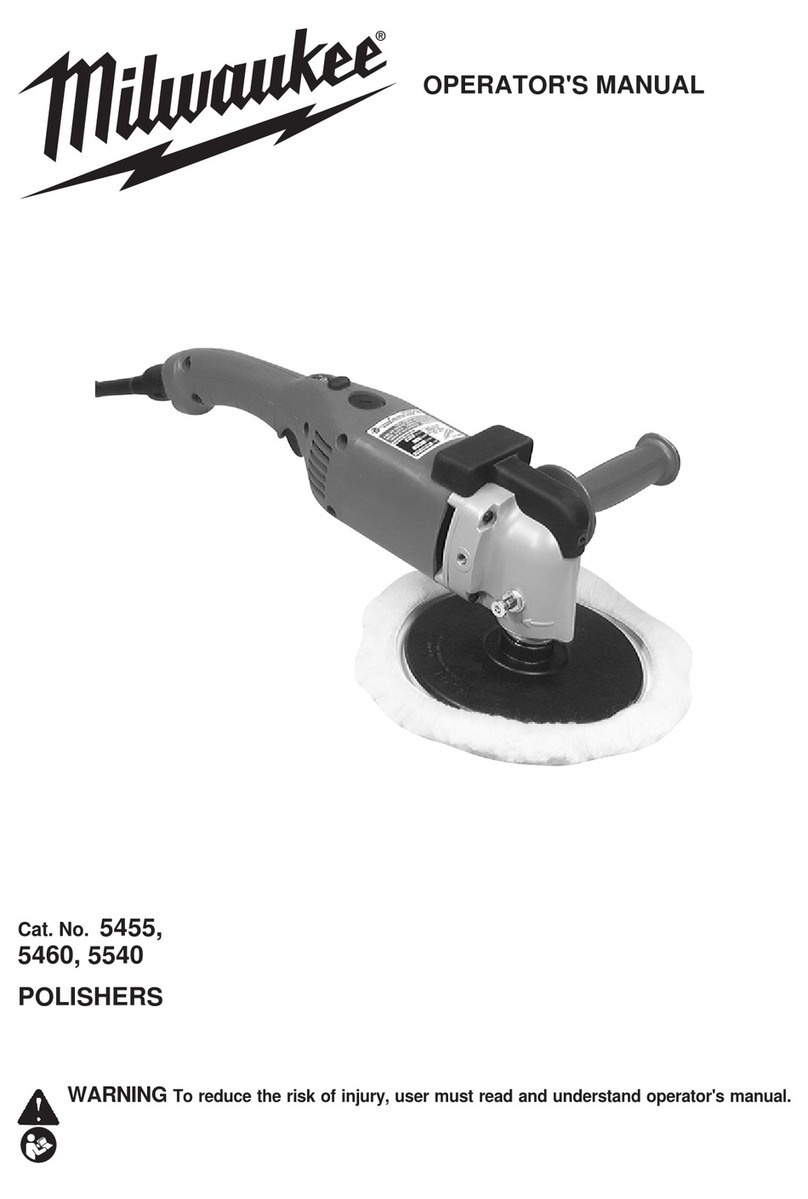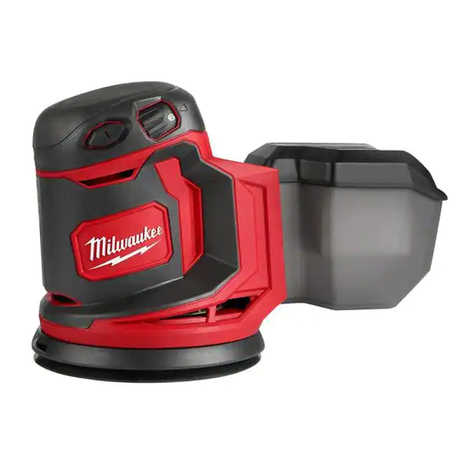ABRASIVE BELTS AND SELECTION
The 5900 and 5900-2 3" MILWAUKEE Belt Sanders are furnished with a49-37-3120,
120 grit, Aluminum Oxide closed coat belt. The 5910 and 5910-2 4'Ml LWAUK EE
Belt Sanders are furnished with a49-37-41 20, 120 grit. Aluminum Oxide closed coat
belt. These belts are recommended for finishing work only. Refer to page 8for chart
on complete selection of MILWAUKEE Sanding Belts for your portable Belt Sander.
CHANGING THE ABRASIVE BELT
Pull the belt lock button lever located on the right side of the sander to "OFF",
toward the rear drum. Stand the sander on its front drum and push down on rear
handle firmly until the pulley locks into position. This releases tension on the
abrasive belt for easy removal.
Hold the new belt so the arrow which is printed on the inside of the belt is on top of
the drums and is facing to the front of the sander. Arrows are indicated on the belt
tension bracket plate to indicate the direction the belt travels. Be sure belt is pushed
completely on to the drums. Move the belt lock button lever to the "ON" position.
The front drum will snap into position with the proper tension on the abrasive belt.
Adjust the belt for proper alignment.
ADJUST THE ALIGNMENT OF THE BELT
Turn the sander over so the belt can run free. While holding it firmly with one hand,
start the motor by squeezing the trigger switch to its "ON" position. Adjust the belt
aligning knob located on your right, (the left side of the Belt Sander), by turning it
in either direction. Movement of this knob changes the angle of the front drum
assembly and alters the alignment of the belt. Move the nut until the edge of the belt
is running flush with the rear drum. The edge of the belt will extend beyond the edge
of the front drum. DO NOT LET THE BELT* RUB ON THE FRAME OF THE
SANDER.
OPERATION
Hold the Sander off the work with one hand holding the front handle and the other
holding the rear handle. Always start and stop the Sander off the work. Alocking
button is provided on the switch for extended use. To use the lock button, depress
the trigger switch, push the lock button in and release the trigger. To release the lock
button, depress the trigger and release. With the motor running full speed, apply the
Sander to the work with aforward motion. The Sander should be fed back and forth
parallel to the grain of the wood. DO NOT APPLY HEAVY PRESSURE. The weight
of the Sander is sufficient for horizontal sanding.
As the Sander is fed back and forth over the surface, guide the Sander sideways.
Overlap strokes keeping parallel to the grain and cover the entire surface to be sanded.
Work the entire surface down evenly and do not allow the Sander to stop moving or
stay too long in one small area. Short overlapping strokes produce the best results.
Avoid tilting the machine when feeding as belt will make agash in the work. To
obtain avery fine surface, change belts two or three times, using afiner grit for each
change and working the entire surface with each grit. Do not use an abrasive belt after
it has become worn or clogged.


